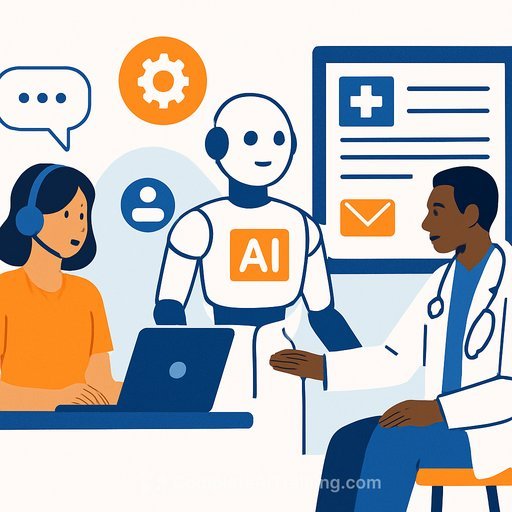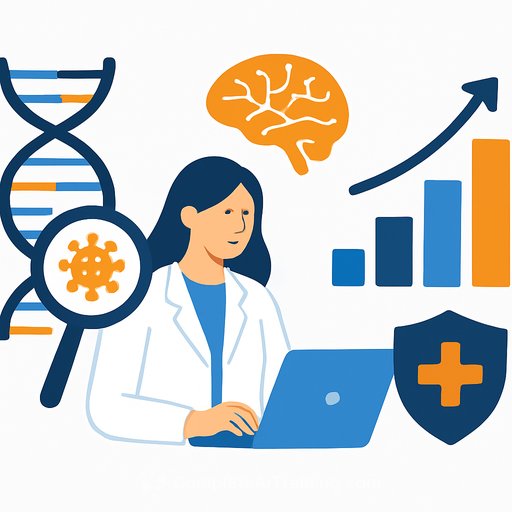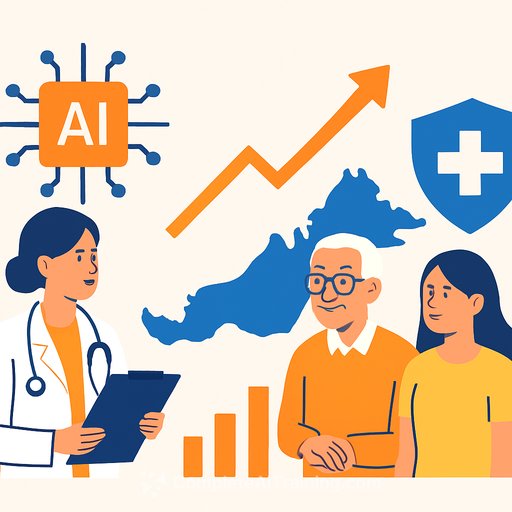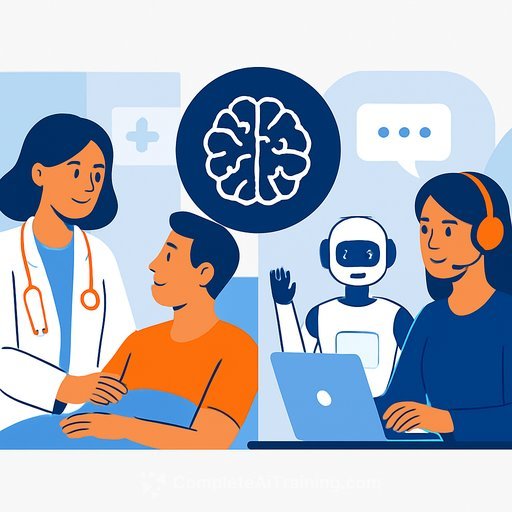Can Large Language Models Transform Healthcare?
AI is now baked into daily tools. Healthcare is next. The question is simple: are large language models (LLMs) ready for real clinical work, or are we still kicking the tires?
Short answer: they're useful today for specific tasks, and they're getting better fast. The smart move is to put them to work where they help now, while building the infrastructure for what's coming.
What clinicians actually need from AI
Patients and clinicians want the same thing: clear reasoning, cited sources, and a sense of uncertainty-not just answers. Patients struggle to interpret severity, pick the right specialist, and make sense of results after a visit. Clinicians face the opposite problem: too much data and not enough time.
LLMs are a good fit here because they can summarize, draft, triage, and surface options with context. They're not magic. They are assistants-useful, fallible, and best with a human in the loop.
Where LLMs work today
The most common use case is ambient documentation. AI "scribes" turn conversations into structured notes. Adoption has been quick because the paperwork burden is real.
Do they save time? Early studies show mixed results. Some of that is workflow friction-learning to review and prompt well. Expect gains as teams standardize how they use them.
Benchmarks that matter
Specialized models are showing credible performance. Med-PaLM 2 scored up to 86.5% on MedQA (medical licensing exam questions), and in a pilot, specialists preferred its answers to generalist physicians' 65% of the time.
That doesn't make it a clinician. It does signal that LLMs can draft, reason, and cite in ways that support care-especially with retrieval-augmented generation (RAG) to ground outputs in trusted sources.
Pre-visit triage and referral
Simulated studies of LLMs as a 24/7 companion show strong early promise. Top-3 specialty suggestions included a correct option about 88% of the time, and triage range accuracy was about 83% in a general-user setting.
Framed as a "copilot," an LLM can highlight differential diagnoses, flag red flags from vitals, and attach citations via RAG. In clinician reviews, LLM-generated diagnoses aligned with at least one of two clinicians about 95% of the time; requiring both to agree still landed near 70%.
Open-ended clinical reasoning
Multiple-choice scores are helpful, but real care is messy. In a randomized trial, physicians tackling open-ended patient-care tasks performed better with GPT-4 support. The biggest lift wasn't just picking the right drug; it was in nuanced communication-like counseling a hesitant patient or addressing an error.
The model encouraged fuller, more thoughtful responses. Even after controlling for length, quality improved.
Patients are already using LLMs
Long wait times push people to what's available. Patients ask chatbots about side effects, treatment options, and next steps. There are risks of misinformation, but the behavior is here.
That puts pressure on health systems to offer safer, supervised options-with clear guardrails, disclaimers, and pathways to care.
What the evidence says about chatbot advice
Research is expanding fast. A review found 137 studies on AI chatbots giving health advice, but methods varied widely. The takeaway: performance is "surprisingly good" in some use cases, inconsistent in others, and improving.
To raise the bar, reporting standards are emerging for clinical evaluations of chatbot advice. Expect regulators to ask for clear validation criteria before approving patient-facing use.
From answers to actions
We're moving toward AI agents that complete tasks: ordering labs, scheduling follow-ups, sending instructions, documenting phone calls, and closing care gaps. Today, they're not reliable enough to run unsupervised.
Tomorrow, supervised autonomy-with audit trails-will likely be the norm.
How to put LLMs to work in your organization
- Start where value is obvious: ambient scribing, inbox triage, patient education drafts, insurance letters.
- Add RAG over your guidelines, pathways, and formularies to ground outputs and reduce hallucinations.
- Keep a human in the loop for all clinical decisions; require final clinician sign-off.
- Track quality: citation coverage, factuality error rate, time-to-note, note completeness, and clinician satisfaction.
- Build prompts and templates into workflows. Standardization beats ad-hoc use.
- Secure data flow: PHI handling, access controls, logging, and vendor assurances.
- Governance: model/version control, update cadence, incident response, and bias monitoring.
- Patient-facing chatbots: clear disclaimers, escalation to humans, and safe responses for emergencies.
- Train teams on review skills: how to read AI output, spot failure modes, and correct confidently.
- Start with pilots. Define success upfront. Expand by service line once metrics hold.
What "good" looks like (working targets)
- Documentation time reduced by 20-40% after onboarding.
- Hallucination/factual error rate below 2-5% on audited samples.
- 90%+ outputs include citations when policy requires them.
- Note quality equal or better per peer review and coding audits.
- Patient message turnaround time improves without more burnout.
What to watch
- Regulatory clarity on patient-facing advice and agentic actions.
- On-device and private-cloud models for PHI-sensitive workflows.
- Specialty-tuned models and tool-use (calculators, order sets, pathways).
- Trust features: source links, uncertainty estimates, and reasoning traces.
Further reading
Recent studies in Nature Medicine and JAMA Network Open outline performance and reporting practices for LLMs in care settings. Useful starting points:
Skill-building for clinical teams
If you're standing up pilots or training care teams on safe, effective LLM use, a curated course path can help. See AI courses organized by role and skill level:
Bottom line
LLMs are already useful for documentation, triage support, and clinician communication. With grounding, guardrails, and measurement, they make a practical difference now.
Treat them as teammates. Make them cite their work. Keep a human in charge. That's how you get value without adding risk.
Your membership also unlocks:






